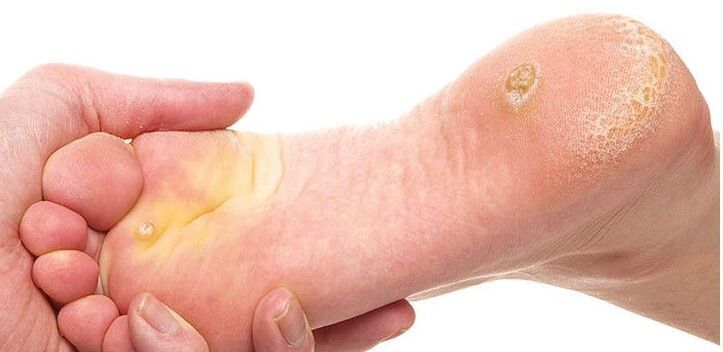
Plantar warts or spine are one of the most unpleasant types of skin growth. This structure is located on the supporting part of the foot or toe. It is composed of overgrown epithelial cells and has a deep root extending deep into the dermis.
In terms of carcinogenicity, the spine does not pose a particular danger, but they can be very painful and cause severe discomfort when walking. This growth is difficult to treat and has a tendency to relapse. How to get rid of plantar warts and which methods are considered the most effective and safe? Learn this from our article.
Why do thorns appear?
Warts on the feet are benign tumors of viral nature. They appear because they are infected with HPV (papilloma virus). Pathogens spread from person to person through contact, or enter the skin when touching an infected surface. It feels great in a warm and humid environment and can be stored for a long time. The risk of infection in public places is particularly high-bathrooms, saunas, gyms, swimming pools. The virus can easily enter the human body through small scrapes or scratches on the skin.
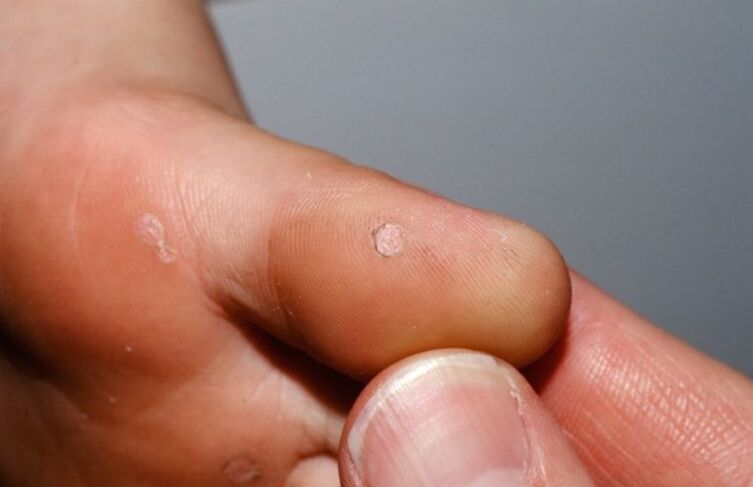
A strong immune system suppresses the reproduction of the virus and puts it in a latent state. But once the body's defenses weaken, the pathogen will be activated and begin to multiply rapidly. Recent diseases, stress, and violations of personal hygiene standards have become incentives to weaken immune defenses. The following factors can cause the formation of plantar warts:
- Excessive sweating of the feet;
- Wearing tight, uncomfortable shoes;
- Minimal trauma to the skin (abrasions, scratches, wounds, abrasions);
- Frequent contact with water and cleansers that cause dry skin;
- Chronic diseases related to impaired blood circulation in the lower extremities (diabetes, atherosclerosis, varicose veins);
- Foot deformities (flat feet, facet joint arthritis, osteoarthritis);
- Constantly forming calluses and corns.
Wear the shoes of an infected person or go to a pedicure salon, where the tools are poorly disinfected and you may encounter plantar warts. Children’s plantar warts usually develop after going to swimming pools, summer camps, public showers, babies may mistakenly put on other people’s shoes, walk barefoot on dirty surfaces, or use personal belongings (towels, face towels, etc. ) of an infected person). Parents should educate their babies to abide by personal hygiene standards as soon as possible and explain why they can't use other people's things.
What does plantar wart look like?
The incubation period for papilloma virus reproduction is very long-from 1. 5 to 4 months. First, the pathogen affects the basal layer of the epidermis and then spreads upwards, leading to the formation of characteristic growths on the skin.
Initially, warts on the feet of children or adults look like smooth patches of round and small diameter (up to 2 cm). Soon its surface became rough, covered with a dense stratum corneum, and rose above the surface of the skin. The color of the spine changes from flesh-colored to yellow-gray. A crater-like depression appeared in the center of the tumor. On closer inspection, black spots can be seen on the surface of the wart. These are thrombus capillaries that appear on the surface. The existence of this feature allows you to distinguish plantar warts from corns or calluses. Photos of plantar warts provide a complete picture of this formation on the skin.
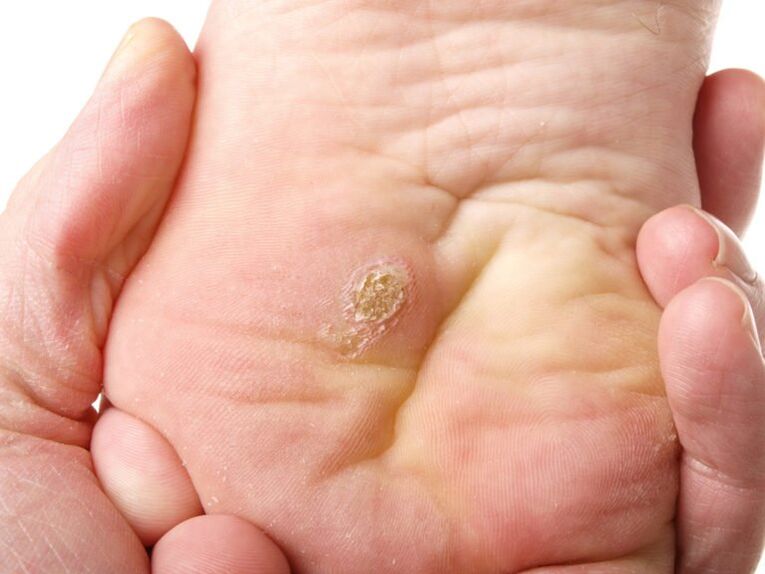
The favorite place to locate the spines is the area where the foot is exposed to the greatest pressure. The root of the tumor goes deep into the dermis and stimulates nerve endings. Therefore, this wart causes pain when walking. The growth of the sole is single and multiple. Usually, a large maternal wart first appears on the feet. If the virus is highly active, it will soon form small offspring next to it. Sometimes the spine disappears on its own, but more often, continuous damage can cause it to grow and cause severe pain due to continuous pressure from the shoes.
If this formation is painful and causes severe discomfort, how can the warts on the feet be removed? First, you need to contact a dermatologist for examination and treatment. Plantar warts are not easy to treat because they penetrate deep into the dermis. To avoid the reappearance of spines, the root of the tumor must be completely removed. This can be done in different ways-medication and surgery.
Plantar warts: treatment
There are several ways to deal with plantar warts. At home, pharmacy products can be used to treat foot warts. Doctors should choose a treatment plan, because only correct and effective methods can be used to achieve positive results.
medical treatement
For the treatment of plantar warts at home, a variety of methods are used-from destroying with corrosive chemicals (acids, alkalis) to freezing pathological tissues with special methods. In order to rule out recurrence, it is not only necessary to remove growth, but also to inhibit the activity of the virus.
The complex treatment is based on the following groups of drugs:
- Antiviral and immunomodulatory agent.A cream that activates local immunity and inhibits virus reproduction. It has a good therapeutic effect. It must be used under bandages twice a day. For the same purpose, a cream that stimulates interferon production is used.
- Cuticle separation agent.Preparations based on salicylic acid or trichloroacetic acid are intended to soften and remove the rough cuticle of warts. Removal of dead skin allows you to reach the bottom of the wart and promotes the penetration of the cauterizing or necrotic solution to its roots. This is the only way to avoid the reappearance of a new formation and get rid of the thorns forever.
- Necrotic drugs.In order to combat plantar warts, it is recommended to buy acid or alkaline solutions with mummification effects in pharmacies. Invasive substances that invade the tumor structure will burn the infected tissue and the wart will necrosis and die. When using such drugs, precautions should be taken, otherwise it will cause chemical burns to healthy skin. Only after consulting with a dermatologist, necrotic agents are allowed to treat plantar warts in children.
- Frozen preparation. . . The principle of action of these funds is based on freezing the wart tissue. Under the influence of ultra-low temperature, the fluid inside pathological cells freezes and destroys them from the inside. As a result, the wart died within 7-10 days. The best products with a freezing effect are produced in aerosol cans equipped with special applicators.
The procedure should be started after consulting a dermatologist. Only an expert can correctly assess the situation and recommend how to remove plantar warts at home. Self-medication usually leads to short-term effects and repeated relapses because it cannot stop the spread of the virus.
Plantar warts in children
The treatment of foot warts in children is gentle. Children’s skin is delicate and thin, so corrosive products can cause irritation or burns. It is best to use keratolytic drugs, which can soften and remove keratinous scales. This treatment is not fast-it takes 2-3 weeks to remove the warts.
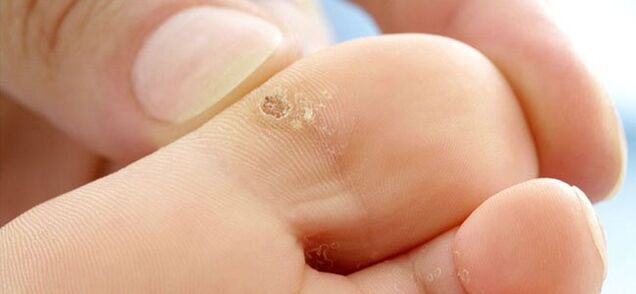
It is necessary to start using keratolytic agents in the initial stages of tumor formation. In this case, the reappearance of deposits can be avoided. If the spine has grown very deep, you will have to resort to hardware treatments to provide the desired results and guarantee that there will be no recurrence.
If plantar warts have not caused much concern, you can treat them with folk remedies-acetic acid solution, lemon juice, garlic tincture. The acidic environment has a destructive effect on the virus, preventing it from reproducing and preventing its growth.
Surgery
The classic operation using a scalpel is rarely used. This kind of intervention is allowed only when the large growth that cannot be eliminated by other methods is eliminated. The operation is performed under local anesthesia. The surgeon removes the wart and cleans the wound thoroughly, trying to completely remove the deep root. The disadvantages of this method include pain, the risk of wound infection and subsequent development of complications, and a long recovery period, during which a person's ability to move is limited.
It is best to use less invasive and safe hardware techniques to remove plantar warts. After the initial examination and the determination of possible contraindications, the doctor will refer you to the procedure. The main treatment options are:
Electrocoagulation
The essence of this method is to cauterize the accumulated tissue with high-frequency current. The procedure is performed under the use of local anesthesia, because it is accompanied by painful sensations. This option is only suitable for removing medium-sized thorns, which germinate shallowly in the deep part of the dermis. If a large stratum is burned, the risk of scar formation and repeated recurrence cannot be ruled out.
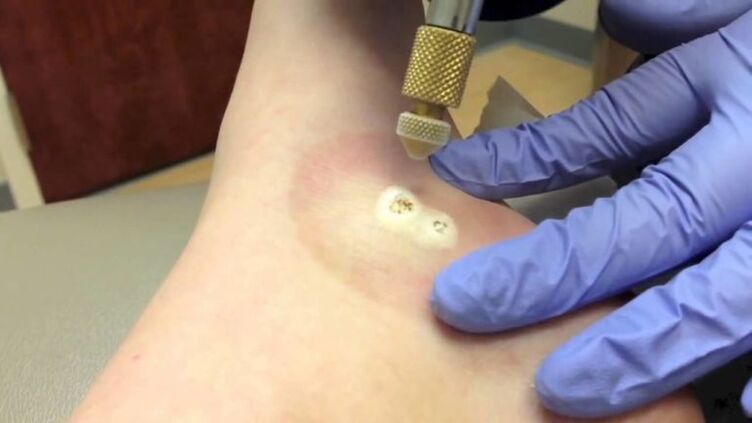
The recovery period after electrocoagulation takes a long time, and the wound needs to be treated with disinfectant to eliminate infection. During the recovery process, the patient's movement is limited because the load on the feet can cause pain.
Low temperature destruction
This is one of the most popular and economical treatments for plantar warts. The procedure takes only a few minutes and includes treating the tumor with liquid nitrogen. Ultra-low temperature provides instant freezing effect. The frozen liquid destroys the cells of the pathological tumor from the inside-as a result, the wart will become necrotic and die within 10 days.
During the treatment, the doctor presses the applicator with refrigerant on the tumor for a few seconds to pre-protect the surrounding healthy tissue. The effectiveness of this procedure is demonstrated by the bleaching of the skin in the treated area. Soon, a blister will form on the wart area, which should not be touched or pierced. It is recommended to cover with plaster to avoid injury. After a few days, the blisters will dry out and form a crusty skin in their place. After it falls off, newer, healthy skin will remain in the area of the wart.
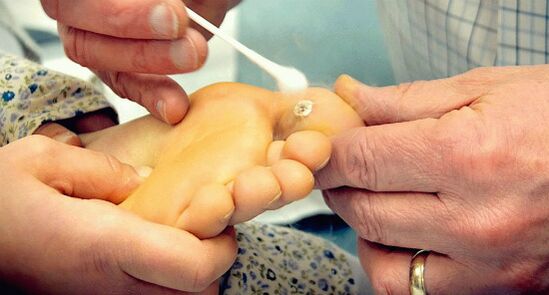
This procedure can only be performed by experienced technicians. Excessive exposure can cause damage to deep tissues and then form scars. Too shallow exposure will not damage the roots of the warts, and will lead to the appearance of new growths.
Laser removal
Modern procedures provide the best aesthetic effect, allowing you to control the exposure depth and eliminate the risk of complications. The laser radiation evaporates the wart tissue layer by layer, while coagulating blood vessels and disinfecting the surgical area. This effect eliminates the risk of bleeding and infection and ensures that there will be no recurrence, because it can prevent the spread of virus particles. Use different types of lasers to remove warts-erbium, acid or pulses.
Laser surgery is safe, effective, painless, and does not require a long recovery period. In the area where the wart was removed, leave a small wound and seal it with a plaster. After the operation, the patient can go home immediately and lead a normal life. The recovery period is short-it only takes a few days to fully recover.
Remove with a wireless knife
The essence of the latest technology is the use of radio waves, which allows you to remove plantar warts in the fastest and safest way. The strong heat radiation can burn off the deposits without directly touching the surrounding tissues. The liquid in the tumor cells evaporates immediately, causing the destruction of the wart. At the same time, healthy skin will not be damaged; during the operation, the doctor will adjust the depth and duration of exposure. At the same time, high-frequency radio waves sterilize the surgical field and cauterize blood vessels, thereby eliminating the risk of bleeding.
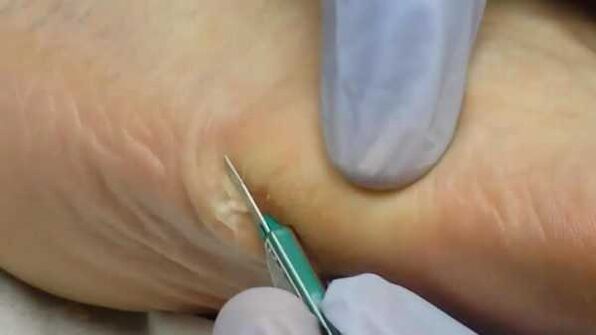
The choice of the method of treatment of plantar warts is jointly decided by the patient and the attending physician. Before making an appointment for surgery, the dermatologist will identify possible contraindications.
List of restrictions for using any hardware method:
- Inflammatory processes on the skin of the treated area;
- diabetes;
- Infectious and respiratory diseases (ARVI, ARI);
- hypertension;
- Herpes virus infection worsens;
- Pregnant.
Discuss with the doctor about the use of equipment and methods related to the child. Some procedures have age restrictions, so you should understand all the nuances of the suggested methods in advance and make sure that they will not harm your baby's health.























